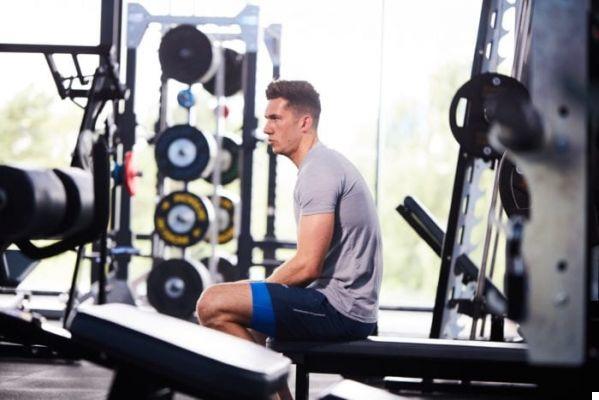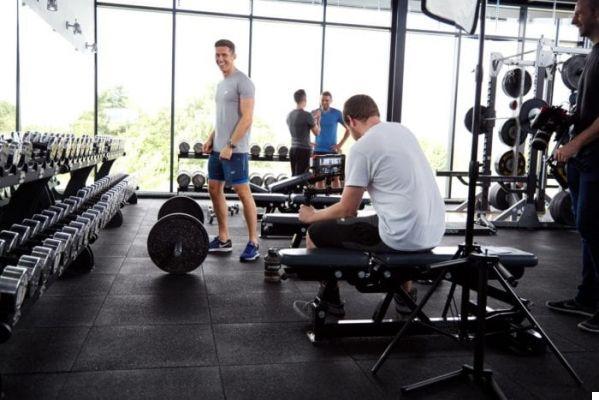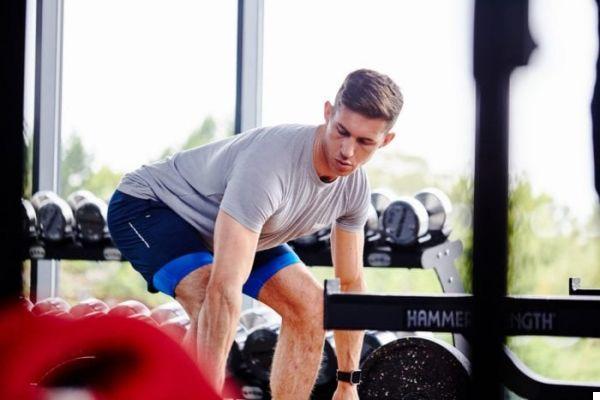Definition
The term "morphotype" (or also called "biotype" or "somatotype") refers to the type of body constitution characteristic of an individual.
In general the anatomy of each species is determined by certain genes that make our eyes be
just two and that the foot is right at the extremity of the leg articulated with the ankle and all the others
individual details of the anatomical structures.
This does not mean that every person is the same, on the contrary people can be classified into three main groups on the basis of particular constitutive characteristics.
These characteristics are deduced from the body constitution, from particular relationships of size and
length of anatomical districts and also on the basis of characteristic pathological states.
But what is the usefulness of using a morphotype? The advantage is due to greater personalization of training and nutrition.

In fact, these two are more effective the more they adhere to their subjectivities.
Knowing the morphotype represents a sort of anamnesis of the subject who approaches the gym and allows you to move towards the best way of training and nutrition, paying particular attention to specific problems.
What is your Morphotype?
The most common somatotypic classification is that of Sheldon. This included three main classes:
- Ectomorph: thin, slender body structure, tall. This biotype is prone to accumulate little fat, has long and thin limbs and its structure is not predisposed to build large muscle masses. The circumference of the wrist is less than 16-17 cm, the circumference of the ankle is less than 22 cm and the weight goes below the height (in cm minus 100) by more than 10 kg.
- Mesomorph: muscular, strong body structure and medium height. This biotype has a medium bone structure, the amount of fat is low, the pelvis is thin while the shoulders are broad. This structure predisposes the mesomorph to develop greater muscle mass. The weight of a "mesomorph" oscillates between 5 kg more and 5 kg less than the height, does the ankle have a circumference of 22? 24 cm while the wrist between 16 and 18 cm.
- Endomorph: fat, rounded body structure and small stature. This biotype has a large pelvis and a robust bone structure; these two characteristics predispose to the accumulation of fat. The ankle exceeds 24 cm in diameter, the wrist exceeds 18 cm while the weight exceeds the height of 10 kg.
It should be borne in mind that the description of each biotype represents an ideal prototype, each subject in fact has intermediate characteristics and an observation of the person as a whole leads to his categorization.
Sheldon's classification is not the only one, in fact there are morphotypes based on more “oriental” concepts that also take into consideration the temperament and psychology and even the intellectual abilities of the subject.

Other somatotypes are based on the relationships between the various body axes. Other morphotypes are based on the areas of main fat accumulation, we are talking about the Ginoid or Android morphotype. Features:
- Android: predisposed to the accumulation of fat in the upper area of the trunk, or from the pelvis upwards. The accumulation of fat is rapid as well as its consumption, this biotype is well suited to the rhythms of light or is more active in the morning while towards evening it tends to rest. This biotype is characteristic of humans.
- Ginoid: this morphotype is predisposed to the accumulation of fat from the waist down and it is difficult to get rid of this adipose accumulation. This biotype is less active in the morning and more lively in the evening. This biotype is characteristic of women.
How to act based on your morphotype
Choices based on the consideration of one's morphotype follow a logical criterion. For example, an ectomorphic morphotype should favor multi-joint exercises and reduce cardio activities.
A mesomorph is favored in the development of important muscle masses without too much predisposition to the accumulation of fat, this gives the green light to a training based on multi-joint exercises supported by targeted isolation exercises and occasionally cardiac exercise.
The endomorph should focus on exercises aimed at fat loss and work with multi-joint and isolation exercises.
Nutrition should be consistent with your tendencies: if you are inclined to accumulate fat
you have to be careful about the intake of carbohydrates and fats and vice versa if it is difficult to accumulate mass.
The gynoid morph should favor higher repetition training for the lower part of the body while more focused on hypertrophy for the upper part; the training volume should be high. Nutrition should be very careful.
On the contrary, an android morphotype can feel a little freer in their food choices and do workouts of medium volume and not too high intensity due to the predisposition to produce cortisol.
final Thoughts
Observing bodily characteristics can suggest important considerations. It is obvious that training can only lead to the development of one's potential and this sooner or later reaches his
limit.

However, this should not be understood as a limit to one's potential: a rule that always applies is that commitment leads to results. This means that even if you are not inclined to develop, for example, the biceps, a constant commitment in their training will surely lead to great results.
Finally, the indications on the style of training must be a starting point and not something to remain fossilized on: if an approach does not work we must find what works for ourselves even if it “goes against our morphotype”.


























